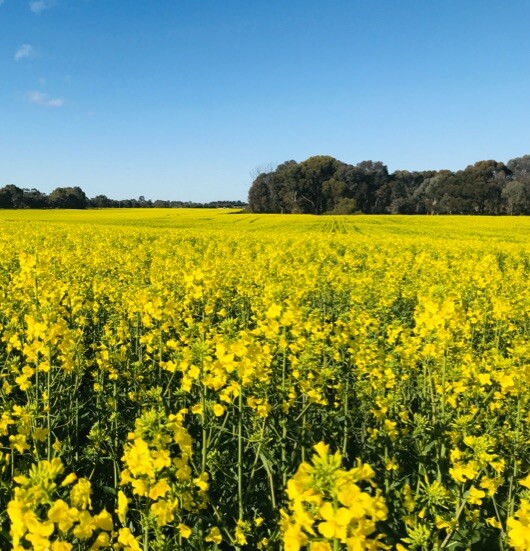Managing sclerotinia
While sclerotinia stem rot is best known as a disease of canola, it can also cause damage to other crops. This article discusses how background levels of sclerotinia in the Riverine Plains are likely to be high, posing a risk to this season’s crops.

Key messages
- The past few seasons have likely increased sclerotinia loads across the region
- Sclerotinia develops under specific moisture and temperature conditions
- In high-risk years, a preventative fungicide should be applied at 20-30% bloom
While sclerotinia stem rot is best known as a disease of canola, it can also cause damage to peas, beans, sunflowers, soybeans, chickpeas and lupins.
Given the recent run of good seasons and the high frequency of canola in the rotation, background levels of sclerotinia in the Riverine Plains are likely to be high, posing a risk to this season’s crops.
With canola now flowering, most growers will have already planned or incorporated a fungicide application into their program. However, it’s also important to consider whether the timing of the spray (either too early or late), and its effectiveness, may impact the level of control achieved.
How infection occurs
Sclerotinia can survive for long periods (4-10 years) on or in the soil but needs a very specific set of environmental conditions to develop in plants, so that control may not be required every year. It requires;
- Wet conditions for at least 10 days at the soil surface in mid to late winter and temperatures 11 – 15°C to germinate sclerotia in the soil and trigger spore release, and;
- An extended wet period during flowering to cause petal infection, and;
- An extended wet period during petal drop (leaf wetness> 48 hours at >95% humidity) and temperatures 15 – 25°C for the infected petals to infect the stem.
Light brown lesions usually appear 2–3 weeks after infection on stems, branches and pods, which then expand and become grey-white (in canola, infected plants also ripen earlier and stand out as bleached/greyish plants among green healthy plants, with stems often breaking/shredding at the base). Hard, black sclerotes can usually be found inside the stem and may be round, rod/cylinder shaped or irregular, 2–4 mm in diameter and up to 20 mm long. Inwet/humid conditions, a white cotton-wool-like growth can also develop on lesions, with sclerotia sometimesdeveloping in this growth (see here)
Control
Once infected, the crop can’t be cured, so the only post-sowing option is to apply a preventative fungicide at 20 – 30% bloom (15-20 flowers off the main stem), which is generally 10 – 14 days after flowering starts.
Main stem infections can be more damaging to yield than lateral branch infections, so the fungicide aims to protect early petals on the main stem from infection and protect potential leaf axis and stem infection sites lower in the canopy from falling petals. As such, high water rates (over 100L/ha) are recommended to ensure coverage and penetration into the lower canopy.
Fungicides generally have an active life of two to three weeks, so protection may decline during an infection period or when flowering is extended. For this reason, a single fungicide application may be ineffective if applied too early, or too late. For high pressure situations, or for long-flowering varieties, a two-spray program could be considered. There are a number of fungicide products available; consider that the timing of the fungicide application is more important than the product used and that fungicide application will not be economic in all years.
Reducing the risk
To reduce the sclerotinia load in the long term, aim to grow canola or lupins every 4-5 years and incorporate lower risk crops into the rotation (canola and lupin are good hosts, so levels can build up quickly). Spores can travel considerable distance, so separate stubble from the previous canola/lupin crop and the new crops by 500m.
Also ensure sowing seed is clean and free of sclerotinia.
There are no commercial varieties with sclerotinia resistance but consider that early winter flowering crops (late June – July) are more prone to disease development and exposure to multiple infection events because flowering often commences when conditions are wet. Bulky crop canopies will also retain more moisture and increase the risk.
Summary
Given the current weather conditions and high yield potential, an application of fungicide is likely to be economical this season, but the effectiveness of control will depend on the timing of the application, disease pressure and duration of flowering.
Further reading
- GRDC managing sclerotinia stem rot of canola in 2023
- https://grdc.com.au/resources-and-publications/all-publications/factsheets/2014/03/grdc-fs-sclerotinia
- SclerotiniaCM App for iPad and android tablets
Author
NEWS
Keep up to date with the latest news from across the Riverine Plains.
-
Livestock
-
People
-
Grains
-
Sustainability

